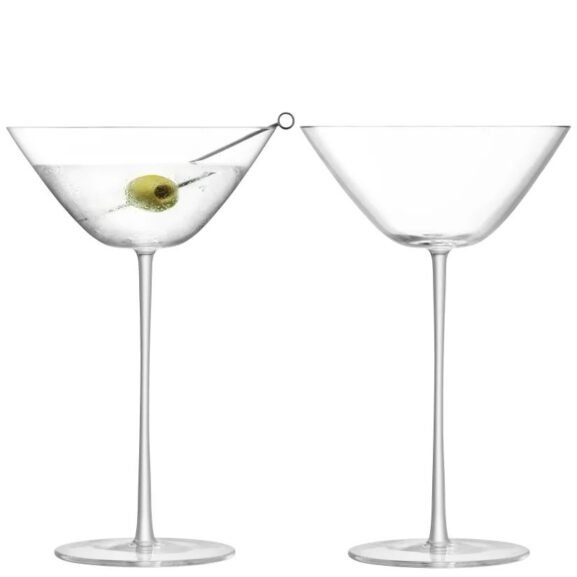The Most Influential Indigenous-Owned Wineries
Australia is home to 500 Aboriginal countries, formed tens of thousands of years before Europeans arrived. Despite the rich connection between the land and its Aboriginal peoples, Indigenous-owned wineries have only been a recent phenomenon. When Paul Vandenbergh, of the Wirangu and Kokatha countries, launched his winery in 2022, it was just the second Indigenous-owned wine business in the country.
In 1998, when Tara Gomez, a winemaker from the Santa Ynez Band of the Chumash Tribe, graduated from the Viticulture and Enology program at California State University, Fresno, she was just one of two women who completed the winemaking program—and the only Indigenous graduate.
“Wine was a male-dominated industry, and an industry where I didn’t see anyone like me,” says Gomez. A quarter century later “and it’s still male-dominated and white male-dominated.”
Things are changing. The COVID-19 pandemic shift ignited a crusade for more diversity within the industry, which is slowly—very slowly—making space for more Indigenous voices.
“I only started to see change when the whole world shut down in 2020,” says Gomez. “It’s a slow shift, and we still have a ways to go.”
There are excellent Indigenous-made, farmed, owned or operated wines in California, Canada, Central Otago, New Zealand and beyond. And each winery owns its Indigenous identity through different avenues.
Vandenbergh, for example, lists the Indigenous place names where the grapes were grown and Gomez mentors future industry members.
Nk’Mip Cellars in the Okanagan Valley creates employment opportunities and guaranteed pensions for band members, while also funneling revenue into the community.
These leaders are not the only ones. Below, we’ve rounded up nine of the most influential Indigenous-owned wineries around the globe that are helping forge a path for more to follow.
Okanagan Valley, Canada
In the 1960s, the Osoyoos band in Canada’s Okanagan Valley began planting grapevines across their land to earn passive income. As wineries started popping up through the region, members began wondering, why sell off good grapes? So, in 2001, they opened Nk’Mip Cellars, North America’s first fully Indigenous-owned and operated winery.
Today, the Osoyoos band oversees 32,000 acres of desert shrubland in the Okanagan, with one third dedicated to vineyards.
“Winemaker Justin Hall is fantastic, hilarious, a smart guy and a great winemaker,” says Wine Enthusiast Writer-at-Large Elaine Chukan-Brown, an Alaskan native from the Inupiaq and Unangan-Sugpiaq tribes. “He’s also a member of the tribal band that founded and still owns Nk’Mip.”

Lompoc, California
“Tara [Gomez] has been recognized by the California state Legislature as the first Native American winemaker,” says Chukan-Brown. “And her wines are great.”
Gomez’ childhood chemistry set and microscope sparked an interest in the alchemy of the natural world, which eventually translated into her tribe awarding her a scholarship to attend Fresno State’s oenology program.
After a decade at J. Lohr, Gomez and her wife, Mireia Taribó, left to run Camins 2 Dreams, a line of terroir-driven wines made on Santa Barbara County soils with a focus on alt-grapes like Graciano and Albariño—varieties from Taribó’s native Spain interpreted through a California lens.
Until it shuttered in 2022, Gomez also acted as the winemaker for Kitá Wines, a line of Santa Ynez Valley Syrahs and sparkling Roussanes born from the Chumash tribe’s 256-acre Camp 4 Vineyard. They were the first Native-owned winery and vineyard with a winemaker from the tribe.
She takes her role as the first Native American winemaker in all of North America seriously. She’s been a mentor with James Beard Foundation’s Legacy Mentorship Program, Hue Society, Speed Rack and Batonnage.
“I’d love Camins 2 Dreams to be a working hub for internships, where I can teach our winemaking practices to students who want to get into the industry,” says Gomez.

Willamette Valley, Oregon
Brandy Grey, a member of the Cherokee Shawnee tribe, has always been a storyteller. She started her career in journalism before stepping into the role of tasting room manager at the Willamette Valley’s Fairsing Vineyards.
When her parents retired in 2007, her father planted vines and named them after their ancestor, Minnehaha Blackfeather. As her interest in wine grew working at Fairsing, the owners Mary Ann and Mike McNally built a small studio on property for her to work out of. From there, Grey began to form her own story, working off the land her people have inhabited for hundreds of years.
“I wanted to use this new avenue to tell the story of our land, which so often fails to include the history of our original environmental stewards—-the Indigenous communities who created these incredible ecosystems that make the bounty of the Willamette Valley possible,” says Grey.
Grey is working on maps that acknowledge the original names of the land. Additionally, sales of her Yamhill-Carlton Pinot Noir are partially directed to Indigenous causes, from solving food scarcity among Native elders to supporting the search for missing and murdered Indigenous women.

Aotearoa New Zealand
TUKU isn’t just one winery— it’s a collective of Māori wineries (Tuku is a nod to the art of Tukutuku weavings) that integrate principles of Māori culture into their practices.
“In one sense, TUKU is just another piece of the puzzle in the process of decolonization,” TUKU Collective Member Jeff Sinnott, former chief winemaker at Ostler Wine in the Waitaki Valley of North Otago told Wine Enthusiast in 2022. “It is a way for a group of friends to state their case to be acknowledged as tangata whenua [indigenous], but also that they have a role to play in te hapori waina [the wine community].”
The collective includes Sinnot, Steve Bird Wines (for zingy Marlborough Sauvignon Blancs), Kuru Kuru (Central Otago Pinot Noir in honor of winemaker Hayden Johnston’s fourth great grandparents Captain James and Kuru Kuru Joss), Te Pā (expressive Marlborough Sauvignon Blancs) and Tiki (sustainably-made single vineyard Sauvignon Blancs).
While indigenous representation in the wine industry is growing, Māori ownership remains limited and labels appropriating Māori values and language are common, especially in the international market. Part of TUKU’s mission is to give drinkers confidence their money is going to a genuinely Māori-owned winery.

Ataware Valley, Aotearoa New Zealand
Tohu, the world’s first Maori-owned winery, was established in 1998 through a partnership of three tribal groups: Wakatū Incorporation Ngāti Rarua Atiawa Iwi Trust on South Island and the Gisborne-based Wi Pere Trust. Set in the oftentimes snow-capped mountains of New Zealand’s Awatere Valley, Tohu focuses on Chardonnay, Riesling and Méthode Traditionelle sparklers.
Day-to-day operations are guided by a 500-year plan to leave the land in a better state than when they inherited it, and the winery’s shareholders are made up of 4,000 Māori families, descendants of four tribes from South Island.
Stellenbosch South Africa
Chukan-Brown is a fan of Ntsiki Biyela, the founder and winemaker of Aslina Wines, and the first Black female winemaker to bloom from South Africa’s post-Apartheid wine industry. “People often overlook that Black people are Indigenous in parts of the world,” says Chukan-Brown. “This is important to recognize, especially in South Africa.”
Biyela cut her teeth at Stellekaya, earning the title of South Africa’s Women Winemaker of the Year in 2009, before launching her own label in 2016. At Aslina, she produces single-variety Chardonnay, skin-contact Chenin Blanc and Cabernet Sauvignon. Her Bordeaux-blend is called Umsasane, after the Zulu word for “umbrella tree,” which provides shelter, protection and comfort.

Western Cape, South Africa
Also out of South Africa, is Kumasha, a new-guard label run by Tinasha Nyumudoka. “He’s an award-winning, Zimbabwe-born, award-winning sommelier working in South Africa,” says Chukan-Brown. “He’s incredibly charismatic and interesting.”
He launched the brand after years working the floor, struggling to connect European wine descriptors like gooseberry and blackberry with the foods and flavors he grew up with. Now, his tasting notes include fruits that center his palate and experiences, like passionfruit, guava and papaya. The brand’s name, Kumusha, is a nod to the Shona word for “your roots,” “your origins” or “your home.”

Barossa Valley, Australia
Belinda van Eyssen was born in Cape Town, where generations of women before her worked picking grapes. When Apartheid lifted, she moved to the winemaking side of things and became one of a handful of female Indigenous winemakers in South Africa. Love coaxed her over to Australia, and now, van Eyssen and her husband Daniel craft fresh takes on Grenache from old vines in the Barossa Valley.
“She’s one of the few people of color making exceptional wines through her family business,” says Vandenberg. “And, she’s been a huge support to me.”
She’s also been a beacon for others.
“There’s a powerful movement happening now, with more Indigenous people getting involved in all aspects of the beverage and hospitality industry,” says Vandenberg. “It’s inspiring to see these voices rise and bring their stories and connections to the land into their craft. It gives me hope for the future, where Indigenous stories will have more space to thrive.”

Kaurna Country, Australia
Vandenberg’s Munda Wines currently cherry picks fruit from small producers across the country, including a Grenache from Barossa Valley, Chardonnay from Tumbarumba and Syrah from Blewitt Springs, then ferments using Aboriginal processes. Vandenberg’s goal is to eventually employ solely Indigenous winemakers.
“There hasn’t been a significant shift in representation yet, but we’re still in the early stages,” says Vandenberg. “One of my motivations behind Munda is to address the low representation of Indigenous peoples, not only through employment but also through cultural recognition.”
Whether it’s acknowledging Indigenous territories on wine labels or through cultural awareness workshops and Reconciliation Action Plans (RAPs), Vandenberg says his overarching goal is to “make this industry more inclusive of Indigenous culture.”
Other Indigenous-Made Wines to Explore
The following Indigenous-owned wineries were also recommended by experts.
Coonawarra, Australia
Australia has only had one Indigenous Australian winemaker (Van Eyssen is from South Africa, Vandenberg owns the winery): Sue Bell of Bellwether Wines.
“She’s incredible, and someone I really look up to,” says Vandenbergh. Bell, who gained experience at Penfolds, pulls from Aboriginal knowledge through the winemaking process. Starting with the history of the seasons and climate, she leans upon Indigenous farmers to show the utmost respect for the land.
Livermore, California
In 2017, Darin Winton retired from a career in water services and decided his next chapter should be centered around a stronger beverage. His Bordeaux-style blends nod to his Cherokee roots (a Right Bank Bordeaux blend is named Aliheliga, or “grateful”) while back labels are by Cherokee artist John Balloue, who is also Winton’s uncle.
Albuquerque, New Mexico
When the New Mexican méthode Champenoise producer needed more land to meet demand, they entered a partnership with the Tamay tribe at the Pueblo of Santa Ana. “Gruet has partnered with the Santa Ana Pueblo to farm vineyards on tribal land, which then ends up in Gruet’s wines,” says Chukan-Brown. The 30-acre Tamaya vineyard is owned by the reservation, and quickly earning cru status with Gruet.
Ventura, California
Natalie Albertson’s (Cherokee) new-ish Ventura tasting room focuses on wild, small-batch wines—apricot-colored Riesling, Primitivo bubbles and inky, whole cluster, foot-stomped Syrah.
“She’s making great low-intervention, natural wines and sources fruit from Santa Barbara County,” says Gomez.
Te-Matau-a-Māui (Hawke’s Bay), Aotearoa New Zealand
Part of a new guard of Māori wineries, Tawhiti is run by chef Matua Murupaenga and Imogen Weir. Māori knowledge runs deep here, from planting according to the maramataka (lunar calendar) to implementing traditional fermentation techniques.
More Indigenous Wine Coverage

In the Shop
For Wine On-the-Go
This versatile messenger-style wine bag comes with removable bottle liners, a corkscrew and an aerator.
Published: October 21, 2024

